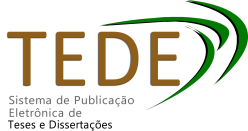| ???jsp.display-item.social.title??? |


|
Please use this identifier to cite or link to this item:
http://tede.upf.br:8080/jspui/handle/tede/427Full metadata record
| DC Field | Value | Language |
|---|---|---|
| dc.creator | Brustolin, Karen Döering | - |
| dc.creator.Lattes | http://lattes.cnpq.br/8902851706240505 | por |
| dc.contributor.advisor1 | Scheffer-Basso, Simone Meredith | - |
| dc.contributor.advisor1 | Escosteguy, Pedro Alexandre Varella | - |
| dc.contributor.advisor1Lattes | http://lattes.cnpq.br/9310606073783054 | por |
| dc.contributor.advisor1Lattes | http://lattes.cnpq.br/3761510596068261 | por |
| dc.date.accessioned | 2018-01-10T18:02:49Z | - |
| dc.date.available | 2013-02-27 | - |
| dc.date.issued | 2012-03-21 | - |
| dc.identifier.uri | http://10.0.217.128:8080/jspui/handle/tede/427 | - |
| dc.description.resumo | Na busca de uma alternativa para o excesso de dejeto líquido de suínos (DLS), aliada à necessidade de aumentar a produtividade das pastagens, este trabalho foi conduzido com o objetivo de avaliar o desempenho de uma pastagem naturalizada de grama-tapete (Axonopus affinis Chase) adubada com esse resíduo, como fonte de nitrogênio (N). Avaliou-se a produção, composição química e florística, bem como aspectos morfofisiológicos da pastagem em função de doses crescentes de DLS calculadas para suprir 100, 200, 300, 400 e 500 kg de N/ha/ano, uma testemunha positiva (200 kg de N/ha/ano, na forma de nitrato de amônio, NA) e uma negativa (ausência de adubação nitrogenada). O experimento foi conduzido em Chapecó, Santa Catarina, em Latossolo Vermelho distroférrico, entre 2008 e 2010. A pastagem foi mantida sem pastejo e submetida a cinco cortes no primeiro ano e seis cortes no segundo ano, com remoção do material vegetal cortado. Os adubos nitrogenados (DLS e NA) foram fracionados em quatro aplicações, que ocorreram após os cortes da pastagem. Na média dos dois anos, foram aplicados 51, 102, 153, 204 e 255 m3/ha/ano de DLS, correspondentes às doses de N. A produção anual de matéria seca (MS) aumentou linearmente em função das doses de DLS, de 2.598 a 7.718 kg de MS/ha (2008-09) e de 4.310 a 12.321 kg de MS/ha (2009- 10), com incremento de 16,5 e 38,6 kg de MS/m3 DLS/ha, respectivamente. As doses de DLS não diferiram quanto à eficiência de utilização de N (14,85 kg de MS/kg de N), que foi 45% inferior à obtida com nitrato de amônio (27,2 kg de MS/kg de N). O índice de eficiência médio do DLS foi de 0,63, variando de 0,38 (janeiro/2010) a 0,96 (outubro/2010). A adubação com DLS e NA reduziu o percentual de leguminosas espontâneas na pastagem, sem afetar os teores de fibra em detergente ácido (39,3%) e fibra em detergente neutro (67,3%). O teor de proteína bruta variou entre tratamentos apenas em três cortes, com maior valor (16%) sob ausência de adubação nitrogenada, em decorrência do maior percentual de leguminosas. O índice de área foliar, densidade de afilhos, comprimento da folha, e altura do dossel vegetativo e reprodutivo aumentaram linearmente com as doses de DLS. | por |
| dc.description.abstract | In seeking an alternative to the excess pig slurry (PS), coupled with the need to increase the productivity of pastures, this study was conducted to evaluate the performance of a naturalized pasture carpet grass (Axonopus affinis Chase) fertilized with this residue as a source of nitrogen (N). We evaluated the production, chemical composition and floristic, and morphophysiological aspects of pasture due to increasing doses of PS calculated to provide 100, 200, 300, 400 and 500 kg N/ha/year, a positive control (200 kg N/ha/year in the form of ammonium nitrate, AN) and a negative one (no nitrogen fertilization). The experiment was conducted in Chapecó, Santa Catarina, in Oxisol, between 2008 and 2010. The pasture was maintained without grazing, and subjected to cuts in the first five years and six cuts in the second year, with removal of cut plant material. Nitrogenous fertilizers (PS and NA) were fractionated into four applications, which occurred after pasture cuttings. On the average of two years, it was applied 51, 102, 153, 204 and 255 m³/ha/year PS, corresponding to doses of N. The annual production of dry matter (DM) increased linearly with the dose of PS, from 2,598 to 7,718 kg DM/ha (2008-09) and 4,310 to 12,321 kg DM/ha (2009-10), an increase 16.5 and 38.6 kg of DM/m³ PS/ha, respectively. Doses of PS did not differ as for the nitrogen utilization agronomic efficiency (14.9 kg DM/kg N), which was 45% lower than that obtained with ammonium nitrate (27.2 kg DM/kg N). The average efficiency index of PS was 0.63, ranging from 0.38 (January/2010) to 0.96 (October/2010). The fertilization with PS and NA reduced the percentage of spontaneous legumes in the pasture, without affecting the levels of acid detergent fiber (39.3%) and neutral detergent fiber (67.3%). The crude protein content varied between treatments in only three cuts, with the highest value (16%) in the treatment without nitrogen fertilization. The leaf area index, tiller density, leaf length, and height canopy and reproductive increased linearly with doses of PS. | eng |
| dc.description.provenance | Made available in DSpace on 2018-01-10T18:02:49Z (GMT). No. of bitstreams: 1 2012Karen_Doering_Brustolin.pdf: 2872328 bytes, checksum: 2fdbec46c939d0bf583595880b0967f0 (MD5) Previous issue date: 2012-03-21 | eng |
| dc.format | application/pdf | por |
| dc.language | por | por |
| dc.publisher.department | Ciências Agrárias | por |
| dc.publisher.program | Programa de Pós-Graduação em Agronomia | por |
| dc.rights | Acesso Aberto | por |
| dc.subject | Pastagens | por |
| dc.subject | Produtividade agrícola | por |
| dc.subject | Adubos e fertilizantes | por |
| dc.subject | Pastures | eng |
| dc.subject | Agricultural productivity | eng |
| dc.subject | Fertilizers | eng |
| dc.subject.cnpq | CNPQ::CIENCIAS AGRARIAS::ZOOTECNIA::PASTAGEM E FORRAGICULTURA | por |
| dc.title | Caracterização agronômica e morfofisiológica de grama-tapete adubada com dejeto líquido de suínos | por |
| dc.type | Tese | por |
| Appears in Collections: | Programa de Pós-Graduação em Agronomia | |
Files in This Item:
| File | Size | Format | |
|---|---|---|---|
| 2012Karen_Doering_Brustolin.pdf | 2.81 MB | Adobe PDF | View/Open ???org.dspace.app.webui.jsptag.ItemTag.preview??? |
Items in TEDE are protected by copyright, with all rights reserved, unless otherwise indicated.




